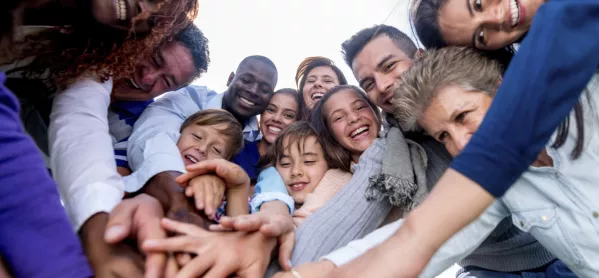When a child comes into your life or your classroom with many acknowledged difficulties and needs there is a human part of us that wants to shield them, make everything right and not rock the boat.
This world can have so many potholes, so many barriers and so much sadness that we can forgive things in them that we might not necessarily forgive in others. We want them to succeed, so we sweep things under the carpet and give them another chance. “Three strikes and you’re out” can become four strikes or five or 10.
An empathy-based approach, however, looks into why incidents happen, and helps to pave the way for children to consider their actions in the future, the next time something similar occurs.
No confrontation with children
Such an approach lacks confrontation. As soon as confrontation is taken away, a child begins to listen. When we speak to an individual child about an incident, we need to have a positive tone. This then models the need for individuals to be honest and allows them to see that honesty is the best policy.
But showing great empathy can, in itself, be quite challenging. When we see a child misbehaving, a natural reaction is to confront and cross-examine them. This has happened to me on numerous occasions throughout my career. Children have all been cross-examined by the head, or had to write down what they saw, or been ushered into different areas so that they cannot communicate and change their story to help their friend.
However, when we remove judgement, a dialogue ensues. Children often need to be cajoled into telling the truth. It helps if they can see that everyone makes mistakes. By making it personal to my own life, I take the spotlight off the children, making it more likely that they will listen.
Say what you see
Often, choosing to say what we see, instead of asking questions, helps to encourage children to tell their own stories. For example, if a child comes up to me crying, my first words are often: “It’s not like you to cry.” The child will often then give me the story behind their tears. Quickly it becomes clear if what happened was an accident, if anyone else was involved, and whether or not they need first aid.
Often, once the child has spoken to an adult, there is a release for them, because they have told someone else their story.
This empathy approach is all well and good, but it needs to stand alongside a robust system of consequences, which are underpinned by the school’s values and ethos.
Empathy and sanctions
It took me quite a while to understand this part. Empathy is a wonderful skill, and some call it a gift. However, it can muddy the water for our students and our colleagues. It needs to run concurrently and in harmony alongside sanctions.
The water becomes muddy when the seesaw of an empathy-based approach and school rules does not balance. We need to ensure that everyone helps to balance the seesaw. All children in our care need to understand that there are rules, which we all have to adhere to, and that there is a listening ear whenever one is needed.
Children and staff need consistency, and this comes about when there are clear guidelines for all. We need to have systems in place, so that children know that they will get the same response, whoever they speak to. We need to train staff through a shared approach, so that everyone understands why systems are in place and what to do if things go wrong.
Kindness with consistency and boundaries is the golden key to helping the children in our care flourish, and to preparing them for the future.
Ginny Bootman is a speaker on the subjects of looked-after children and the role of empathy in the classroom. She is a Sendco at Evolve Church Academy, Northamptonshire. She tweets as @sencogirl




